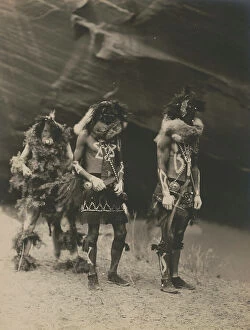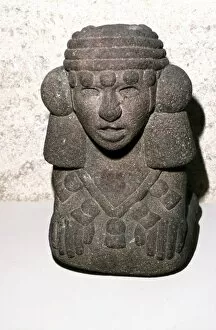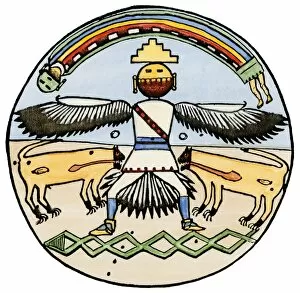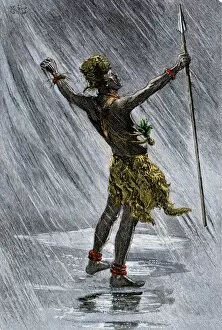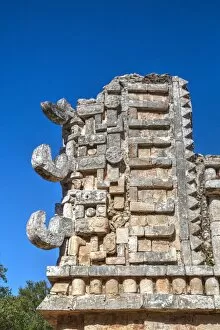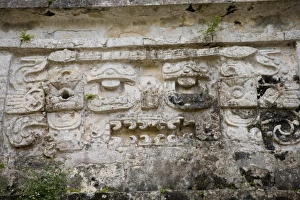Rain God Collection
"Unveiling the Mysteries of the Rain God: From Ancient Artifacts to Natural Wonders" Discover the captivating realm of the rain god
All Professionally Made to Order for Quick Shipping
"Unveiling the Mysteries of the Rain God: From Ancient Artifacts to Natural Wonders" Discover the captivating realm of the rain god, as we journey through time and space to unravel its significance across various cultures. The Aztec stone head Tlaloc, dating back to 1300-1521, stands as a testament to its revered status in Mesoamerican civilization. Intricate incense burners shaped like Tlaloc and Nappatecuhtli transport us further into Late Postclassic times, where worship and offerings were made to appease these deities for bountiful rains. A replica of Chac-Mool statue from Chichen-Itza reveals how even earlier civilizations like the Maya held reverence for their own rain god. A monochrome photograph captures the enigmatic beauty of a Chac-Mool sculpture from Yucatan, showcasing its timeless allure. Meanwhile, a vibrant fresco depicting Tlalocan - the heavenly abode of rain gods - immerses us in an ethereal world where rainfall was believed to originate. Mayan craftsmanship takes center stage once again with a vessel molded in honor of Chac Mool; its intricate design pays homage to this deity's role as both provider and protector during rainy seasons. Venturing beyond ancient artifacts, we encounter nature's awe-inspiring tribute to the rain god at Monument Valley's Rain God Mesa Rock Formation in Arizona's Navajo Tribal Park. Towering majestically against azure skies, these natural wonders remind us that divine forces continue shaping our world today. As we conclude our exploration, we encounter Zuni eagle god – another embodiment associated with rainfall among Native American tribes – symbolizing hope and renewal brought by precipitation. From sacred sculptures etched by human hands millennia ago to majestic rock formations sculpted by Mother Nature herself; each artifact whispers tales about humanity’s eternal fascination with rain gods and their vital role in sustaining life.



